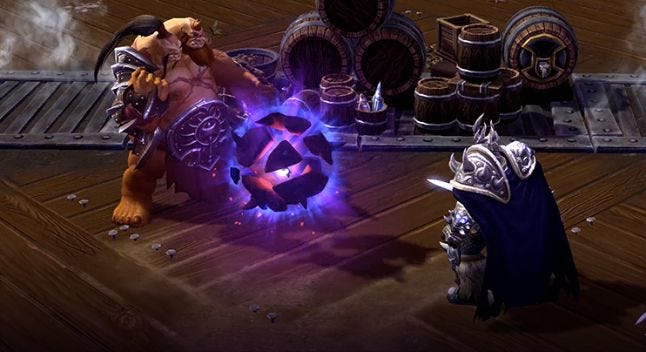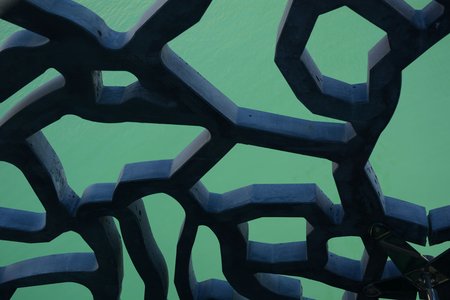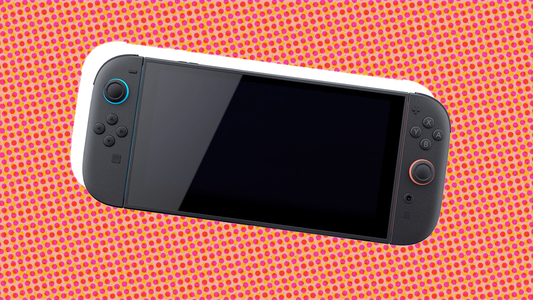Fifteen years ago, Blizzard released the fantasy RTS Warcraft III: Reign of Chaos. The following year, a mod of that game called Defense of the Ancients created the popular and lucrative multiplayer online battle arena (MOBA) genre. Two years ago today, Blizzard brought things full circle by releasing their own MOBA, Heroes of the Storm.
The 2015 game is like Blizzard's version of Smash Bros: A mix of characters drawn from its other franchises (Starcraft, Diablo, Warcraft, The Lost Viking, and now Overwatch), rebuilt in a genre that has its roots in the company's rich strategy game history.
As Heroes' development has continued, it's been worth paying attention to how Blizzard differentiates its MOBA from its more-established competitors. While it's noteworthy that Blizzard's biggest differentiator is the choice to use multiple maps, it's also worth tracking how it applies the company's renowned polish to its myriad of heroes.
We wanted to learn a little more about how Heroes of the Storm tweaks and rebalances characters from other franchises and genres. Luckily, Kent-Erik Hagman, lead hero designer on the game, was willing to talk us through the process of conceptualizing, designing, and refining three heroes that show how Blizzard has put its own stamp on the MOBA genre.
CHO’GALL
This two-headed ogre magi pulled from the Warcraft franchise is unique in Heroes of the Storm and most other MOBA games, in that he is controlled by two players. How was the character conceived, and how did the Heroes team go about testing his creation at first?
Cho’gall first came up in discussions about a month before the technical alpha started—we had this pitch for a Hero that had a relatively standard ogre mage fantasy. But then we looked at that second head, and said to ourselves, "There's got to be more we can do here!" There were some basic ideas—maybe you select a second talent for the second head; maybe the second head is constantly casting a spell, and as the first head, you need to try to work with it.
"We didn’t want this to be two Heroes glommed onto a single body, so we tried out various levels of interaction between the two heads."
Eventually, there started to be this collective consciousness trending towards doing more with that second head. Multiple members of the team from multiple disciplines (art, engineering, design) were all pitching this idea of the "two-player Hero." He already has two heads so it seemed like such a natural fit, we had to run with it!
We quickly found that there were a lot of ways to do a two-player Hero, but each one had various potential pitfalls. We decided to focus each head in its role, and isolate the movement controls to a single head (Cho).
We didn’t want this to be two Heroes glommed onto a single body, so we tried out various levels of interaction between the two heads. In fact, the first iteration of Rune Bomb had Cho summon these orbiting Bombs that would just passively rotate clockwise around his body a good distance away from him, and Gall would have to use Shadowflame to pop the bombs. We quickly discovered, however, that this was incredibly frustrating to play, and not very rewarding.
What were some of the technical decisions needed to get two players controlling the same character?
Cho'gall is one of the biggest technical hurdles ever overcome by our engineering and technical design staff. First we had to figure out how to get the second player there. Setting up Cho was relatively straightforward for our engine—he's just another Hero.
Gall, on the other hand, is an "invisible, uninteractive" unit that is grafted onto Cho, forced to travel where he goes. When we were first working on the pair, we came across many situations that could disjoint these two brothers from each other. Our technical design team did a great job answering each new issue quickly so we could get back to playtesting!
 Two heads are better than one
Two heads are better than one
MOBAs generally are all decision-making in mobility to set up combat. How did you grapple with asking players to sacrifice movement control to make this character work?
Thankfully we had already developed Abathur—a Hero who offered a similar gameplay experience. We looked at Gall as more of a concentrated version of Abathur, where he was attached to another Hero’s body. The more we played with Cho'gall, the more we started to look at them as Cho driving the vehicle with Gall as his gunner.
Cho exists to get Gall into position to deal the damage. We gave Cho his mobility to help him be the "driver" for the two. We initially tried to make most of his mobility have some sort of wind-up or visual tell, so that Gall would know that his firing position was about to change.
Now that Cho’gall is out in the wild, is there any part of his (their?) design process you’d handle differently?
Looking back, I think there were two parts to the process of making Cho’gall where we underestimated how difficult it would be to get Cho’gall working to our satisfaction. The first was the coordination factor. We started with what were some pretty tough coordination requirements for Rune Bomb, since they sounded pretty easy on paper. Gall didn't have a "Runic Blast" to detonate the bomb.
Instead, his low cooldown Shadowflame was supposed to "pop" any Runic Bomb that Cho had, to create this fun two-player combo. It seemed straightforward, but once the rubber hit the road, we were shocked by how tricky it was to get working. We eventually tried simpler versions until we landed on giving Gall a "detonate" button in the form of Runic Blast. It ended up feeling so much better for Gall, as you no longer felt punished for using your Shadowflame on cooldown, which is what you wanted to do.
The other difficulty in the process was the actual playtesting. The logistics for our daily playtests were not set up to comfortably handle the two-headed Hero. We quickly realized we needed to start doing formal assignments for who was playing what Hero in a playtest to make sure enough people got to try both Cho and Gall and provide their valuable feedback.
It got especially rough when talents started getting implemented, as usually each talent needs its own game (or two or three if there are certain synergies) to test, and then when you double it all for the second head . . . it can be quite the task to playtest each Hero and each talent! Going back, I think we should have worked as a team to set up more structure to those playtests to get good coverage on all of Cho'gall's kit and talents.
 Other HotS characters ride a mount for a speed boost. Cho'Gall carries his.
Other HotS characters ride a mount for a speed boost. Cho'Gall carries his.
Any fun stories about the team who worked on the character?
Our animation team had so much fun animating Cho’gall. Early on, in our internal art page, we saw the Cho’gall animation of him carrying a horse, set to the Last of the Mohicans theme. Immediately a group of us designers walked over to the animator who made it and we all fell to our knees shouting, "We’re not worthy! We’re not worthy!"
D.VA
This character is a mech warrior from the Overwatch universe. When her mech is destroyed, she's ejected, and can continue fighting by herself. What are the technical challenges involved with building both “pilot mode” D.Va and “mech mode?”
Ironically enough, D.Va's two forms was retreading ground we had already covered, but probably in a space that doesn't seem connected at all: Lt. Morales' Medivac. While in Mech Mode, Pilot D.Va is really just riding around in her own "Medivac," which is functionally what her Mech is. As an interesting aside, it was also implemented by the same technical designer who had implemented Cho’gall, and looking back had said, "Man, I should've made Cho’gall a Medivac!"
With the ever-increasing number of characters in Heroes of the Storm, how did the design team work to build D.Va’s play identity and keep it separate from other ranged warrior characters?
We definitely wanted D.Va's "thing" to be her two forms: Mech and Pilot. Most of our Tanks and Bruisers have some sort of way to stay in the fight, be it a self-heal (E.T.C., Stitches) or an increasing health pool (Diablo).
For D.Va, we wanted the second health bar of her Pilot mode to be her extra survivability, and have it tied to her ability to get back into a Mech before being killed. We also felt that this two-formed Hero, the tanky disruptor and the damaging backline Hero, lent itself to a unique playstyle in our game.
 A mech-less D.Va doling out a Big Shot attack
A mech-less D.Va doling out a Big Shot attack
D.Va’s Self-Destruct seems to mark the first major difference between the Overwatch incarnation of these characters and the Heroes versions. In Overwatch, it’s an ult; here, it’s in her basic kit. Can you explain how the team arrived at that decision, and what kind of process led them to developing replacement ult abilities?
No tags.



































